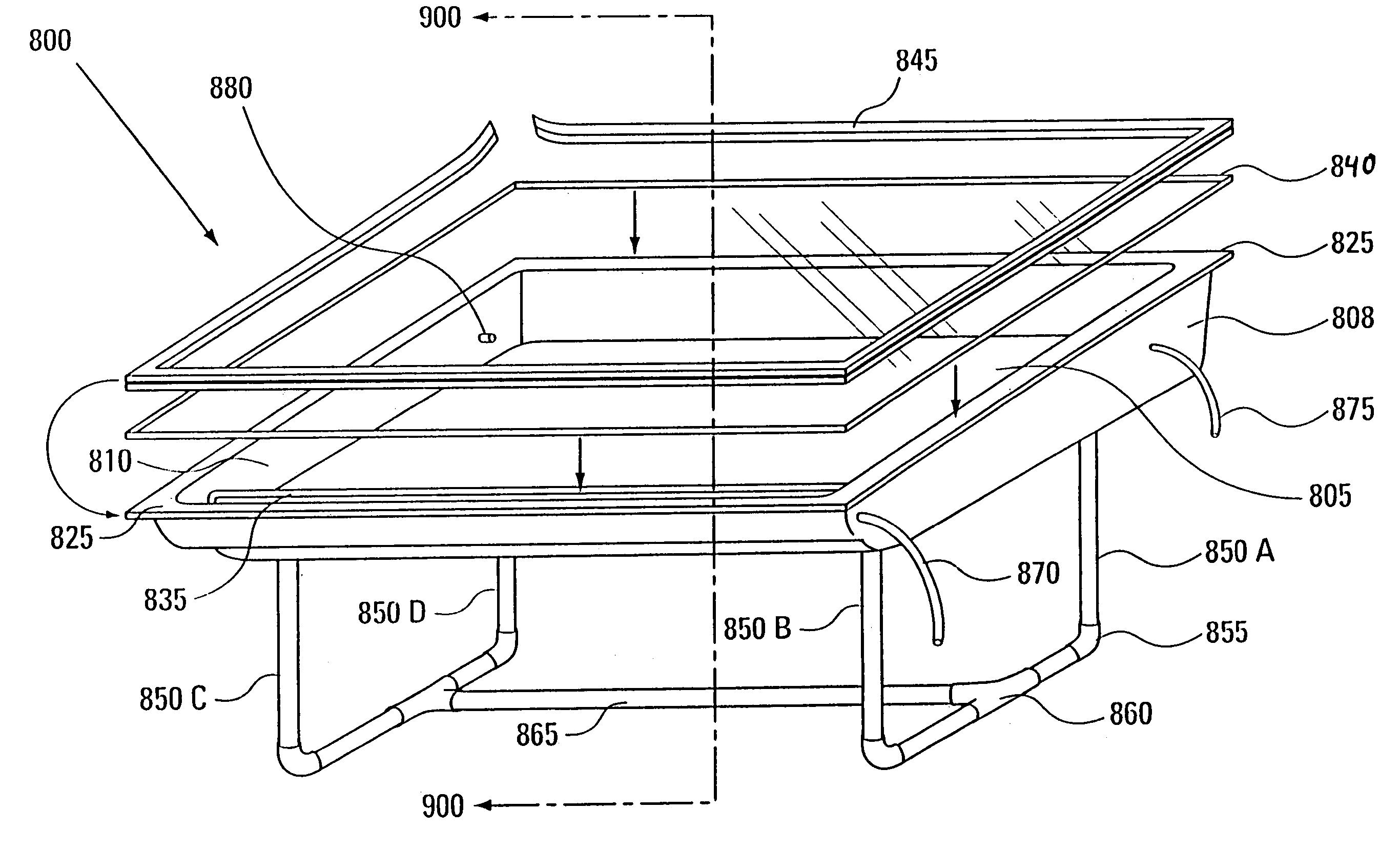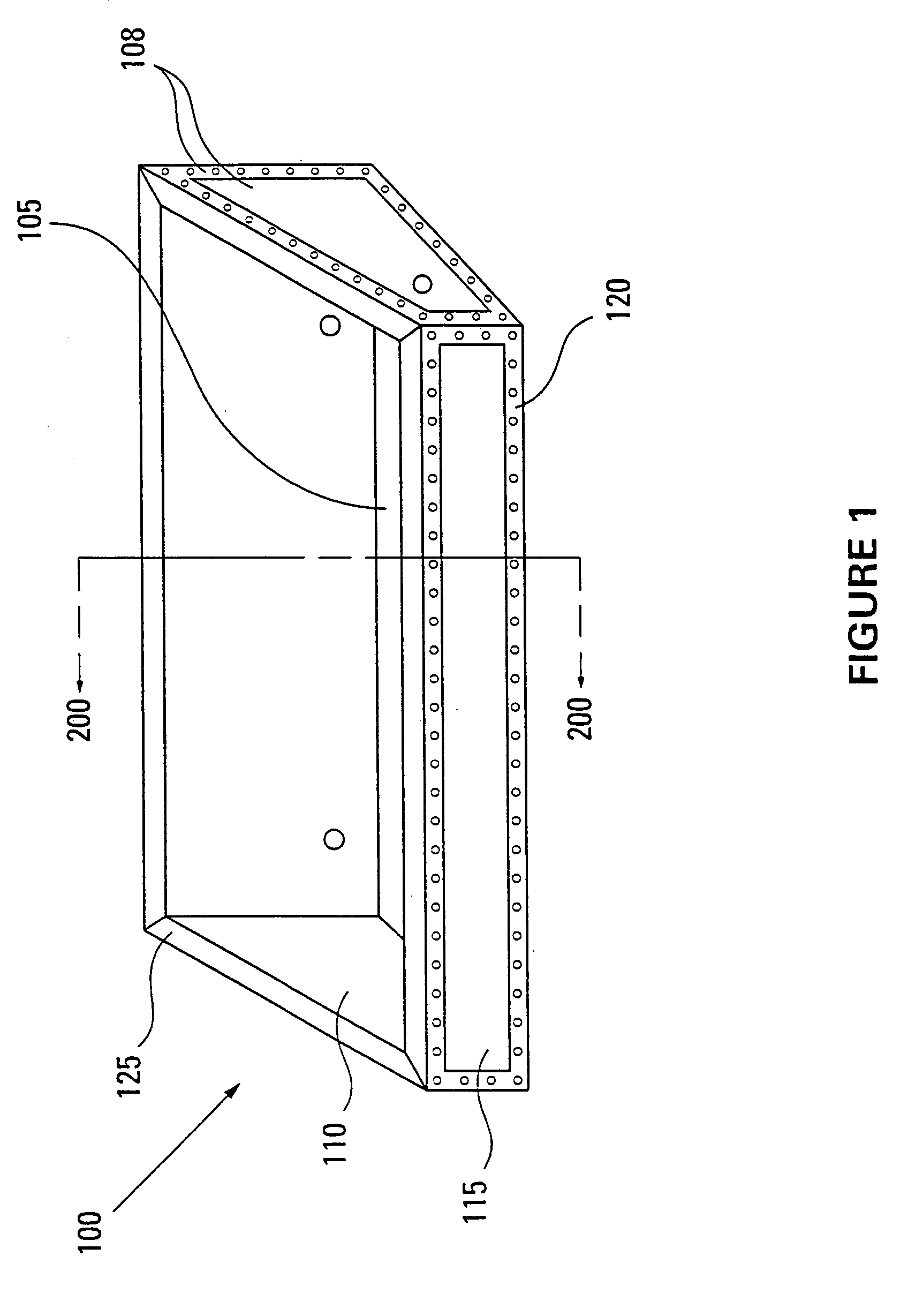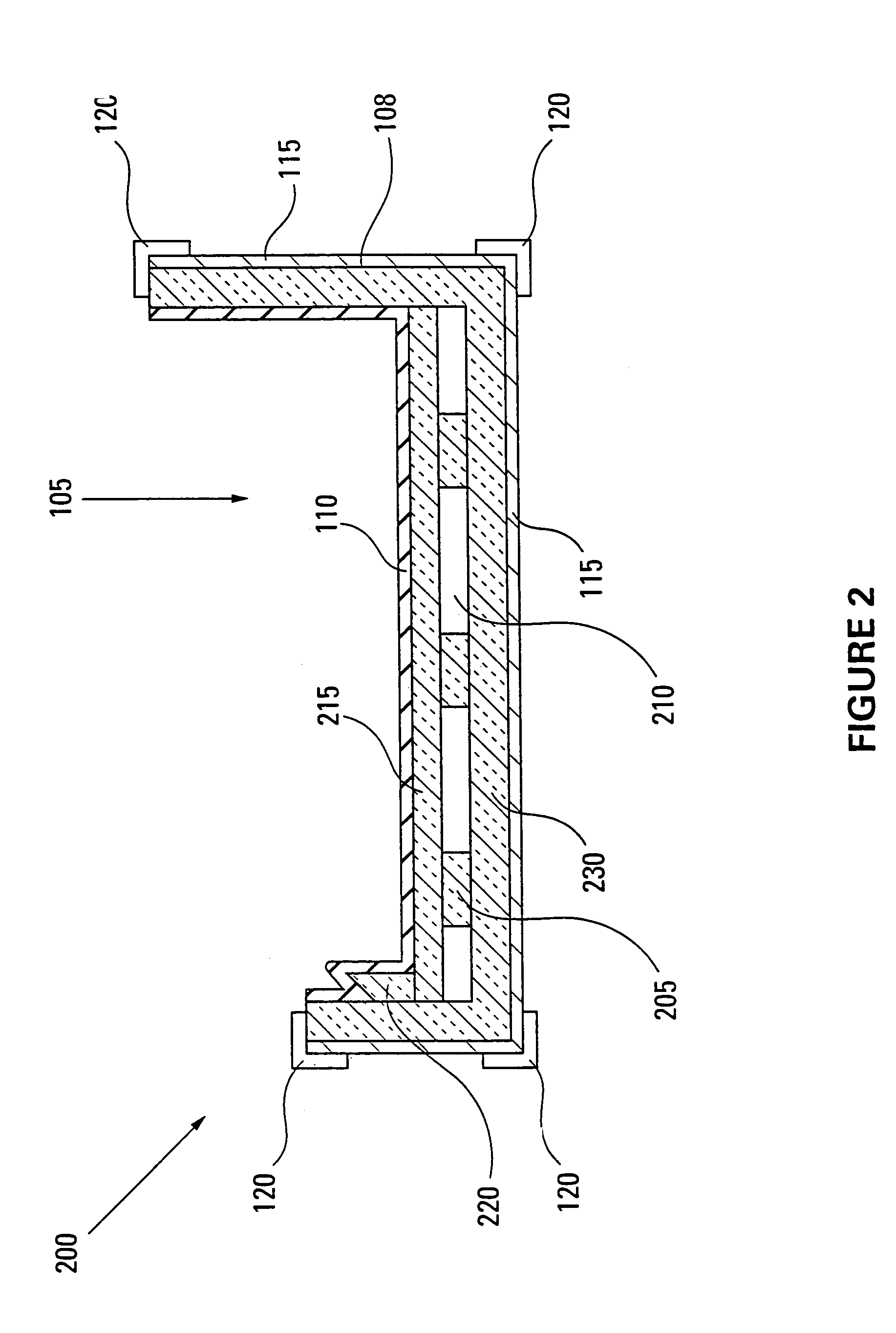Systems and methods for solar distillation
a solar energy and distillation system technology, applied in the field of solar energy methods and systems, can solve the problems of not providing a practical solution for providing clean and safe drinking water to the masses of people throughout the world, and many of the known stills are difficult and/or expensive to construct or purchase. or other problems, to achieve the effect of improving the support of the solar still, facilitating the leveling of the still, and facilitating the level
- Summary
- Abstract
- Description
- Claims
- Application Information
AI Technical Summary
Benefits of technology
Problems solved by technology
Method used
Image
Examples
Embodiment Construction
[0036]Although solar powered distillation systems have been know for some time, a low cost, lightweight, easy to assemble, portable still with good reliability has not been available until the creation of the present invention. As such, until now low cost high volume production of solar power distillation systems has not been viable. The present invention uses a unique set of materials and assembly processes, along with offering a unique method of still operation, to provide a low cost, lightweight, easy to assemble, durable and reliable solar power distillation system that may be sold, shipped to, and used at any location (including remote locations) throughout the world. A preferred application for the solar distillation system of the present invention is water distillation for providing clean safe drinking water. However, the present invention may also be used for other distillations and even for heating liquids (e.g., producing hot water).
[0037]Referring now to FIG. 1, a perspec...
PUM
 Login to View More
Login to View More Abstract
Description
Claims
Application Information
 Login to View More
Login to View More - R&D
- Intellectual Property
- Life Sciences
- Materials
- Tech Scout
- Unparalleled Data Quality
- Higher Quality Content
- 60% Fewer Hallucinations
Browse by: Latest US Patents, China's latest patents, Technical Efficacy Thesaurus, Application Domain, Technology Topic, Popular Technical Reports.
© 2025 PatSnap. All rights reserved.Legal|Privacy policy|Modern Slavery Act Transparency Statement|Sitemap|About US| Contact US: help@patsnap.com



